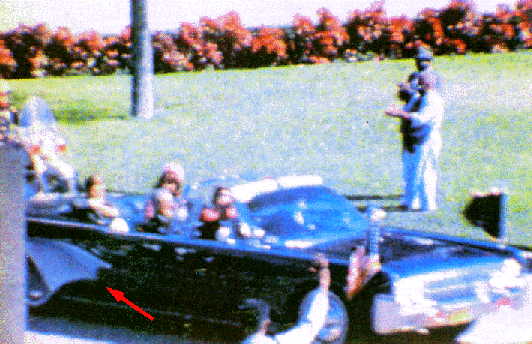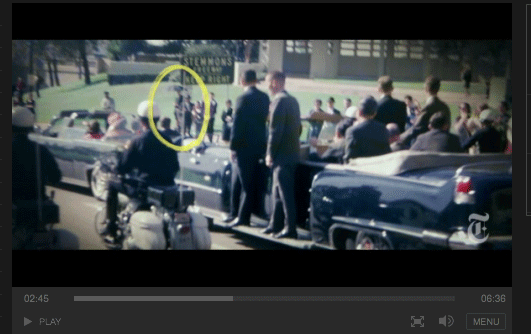Today marked the 48th anniversary of the Kennedy assassination. Over the last few days you may have seen a few of the documentaries and specials recounting and re-examining the event.
Recent advancements in the sciences of 3-D computer modeling and forensics have pretty much put to rest the major conspiracy theories that have thrived over the last four decades–at least for those who are persuadable. For many, it’s just too psychologically painful to accept the fact that a lone nutburger with cheese can change the course of history.
Here’s a great site that calmly, methodically debunks virtually all of the major conspiratorialist theories.
Of course, any attempt to persuade will invariably be met with a hail storm of cited “anomalies” and “wildly improbable coincidences.”
- What happened to Kennedy’s brain?
- What about the three “suspicious” tramps that were rounded up?
- Why did several people see puffs of steam or smoke rising from behind the fence by “the grassy knoll.”
- And why was a man standing by the road under an open umbrella on a clear, sunny day at the very spot Kennedy was shot. (see photo above.)
Indeed that last item on the list, the man with the umbrella, has been the source of endless speculation and theorizing. Well, today I came across a wonderful little segment (at the New York Times site, of all places), that reveals the secret of the “Umbrella Man.”
The six-and-a-half-minute piece is a beautiful little piece of film making. And it hits on a line of thought I’ve had regarding other massively culture-shocking events such as the 9/11 attacks. I can’t embed it, so go watch it by clicking the image below, then come back for my deep thoughts:
If you watched the piece, you now know that Umbrella Man was an eccentric protester carrying a beef with Joe Kennedy and Neville Chamberlain. If Oswald had had a flat tire on the way in to work that day, no one would have ever noticed umbrella man and there would not have been 48 years of wild speculation about his connection to the assassination.
This brings me to the point I want to make. For each of us, each moment of each day is almost certainly filled with anomalous or oddly coincidental events. But because these events pass by us in the constant stream of time, we almost never become aware of them. For example . . .
Perhaps at a stoplight here in Dallas today, the person in the car behind me was born in the same Oklahoma City hospital as I, and delivered by the same doctor. That would certainly be an odd coincidence. But it’s a coincidence that would never come to light. I turned right. Driver #2 went straight. And the stream of time flowed on.
We all probably miss dozens of such odd coincidences each day.
On dozens of occasions in my life I have missed a flight or changed my flight plans at the last minute. On each occasion, I booked another flight and continued to my destination and didn’t give it another thought. But what if one of those missed flights had subsequently crashed on takeoff? Suddenly my missed flight would take on massive cosmic significance in my mind and in the minds of everyone who knows me. Also, each factor in that day that led to my having to miss the flight would take on tremendous meaning.
Now extend these phenomena across a large area involving a large number of people. This is precisely what a momentous event like the Kennedy Assassination or large scale terrorist events like 9/11 do.
These events freeze the river of time. They create a frozen moment which survivors can subsequently examine, explore and study–for days, years, even decades. And this study invariably results in exposure of many anomolies and “wildly improbable coincidences.”
Take my hypothetical stoplight above, for example. If a bomb were to have gone off in that intersection taking me and that other driver at the light into the next life, some enterprising researcher might have discovered that odd birthplace link between me and Driver #2. With enough study, other commonalities would likely emerge. Perhaps the doctor that delivered us committed suicide several years later (though some in the family always wondered if it hadn’t really been a murder.) All this would certainly lead to speculation and armchair theorizing about motives, plots and something “bigger” going on.
The more people affected by an event, the more “frozen moment anomalies” there are to uncover. And the more sensational the event, the more people there will be spending time, money and energy searching for them.
Did you know that Lincoln’s personal secretary had the last name “Kennedy.” And that Kennedy’s personal secretary was named “Lincoln.” Coincidence?
Why yes. An odd one. But just a coincidence.



